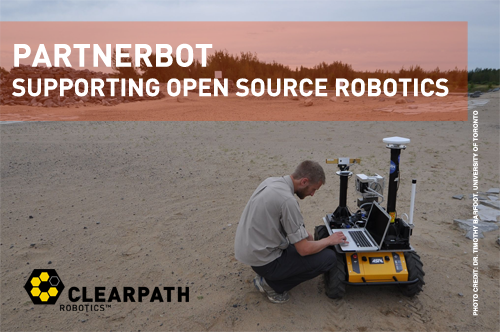From the ROS Industrial Consortium
With input from the industrial robotics and automation community, Southwest Research Institute has set a low-cost membership model for the ROS-Industrial Consortium (RIC). This model encourages a broad base of membership and gives participants more control over how development funds are used. In conjunction with the launch of the consortium, SwRI has funded a special internal research program to accelerate ROS-Industrial development and benefit the technical needs of the Consortium.
Southwest Research Institute is launching the ROS-Industrial Consortium to conduct foundational, precompetitive research and code development and apply advanced ROS software to industrial applications. "As an early adapter of ROS, SwRI has been successfully leveraging it for industrial robotics applications," explained Shaun Edwards, a senior research engineer in SwRI's Automation and Data Systems Division. ROS (Robot Operating System) is an open-source project providing a common framework of libraries and tools for a wide range of applications, particularly in service and research robotics. In January, SwRI established the ROS-Industrial repository, an open-source resource providing a common industrial control platform to facilitate technology transfer from research labs to industry.
"Following other successful open-source projects as models, SwRI is initiating a precompetitive commercial collaborative research consortium, exclusively focused on the needs of industrial robot users," said Paul Evans, director of SwRI's Manufacturing Systems Department. RIC full membership is set at $10,000, with lesser levels of membership available (see membership table). "RIC will accelerate the development of ROS-Industrial. RIC members will work together to develop an application roadmap for ROS-Industrial, set near-term technical goals and participate in spinoff focused technical projects."
"We are excited about a multi-year, internal research program SwRI funded to capitalize on recent research and allow us to accelerate hardware integration tasks," Edwards continued. "The funding allows us to implement ROS-I interfaces for industrial robots to enable users to reuse software for advanced robotics applications. The program will also fund a significant effort to develop advanced functionality and add new capabilities to highly reliable industrial robot platforms."
To date, ROS-Industrial has demonstrated capabilities unmatched using conventional industrial robot control for applications such as material handling in dynamic environments with on-the-fly object segmentation and grasp planning http://youtu.be/_WG-45cZSUQ. Standard interfaces allow high-level software to work with any robot. ROS-Industrial supports robotic workcell visualization and simulation capabilities such as RViz, allowing system development and testing with or without physical hardware.
ROS-Industrial allows advanced 2D-vision and 3D-point cloud sensor processing. Rich software development tools (based on standard Linux tools) include universal logging, debuggers and automated coding. Multiple robot path planners and optimizations allow developers to choose and customize systems that support high-degree-of-freedom systems coordinating multiple arms.
"It's an exciting time in industrial robotics," continued Edwards. "After the economic downturn, the U.S. is now seeing a new government focus on manufacturing, a surge of venture capital spending in this area, and a trend toward returning manufacturing to the U.S. due to rising labor costs in other countries."
For more information about the ROS-Industrial Consortium, see http://rosindustrial.org/ric/default-ric.htm or contact Evans at paul.evans@swri.org or (210) 522-2994.









